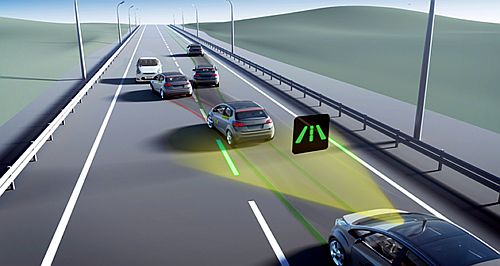ANCAP revisits lane keeping assistance

OVER-zealous elements of Advanced Driver Assist Systems (ADAS) that have been identified by owners as potentially distracting are being put under a microscope at the Australasian New Car Assessment Program (ANCAP).
The road safety organisation has initiated a pilot research project to “lift the lid on usability of lane support systems”.
However, as exemplified in the new Mitsubishi Triton ute, which, after owner feedback has received a recalibration to what has been described as its incessant ADAS Driver Monitoring System, ANCAP has not mentioned any other ADAS systems for re-evaluation apart from those affecting lane keeping.
The safety body said in a statement, “behind the curtain of ANCAP Safety’s official collision avoidance testing, an important program of research tests is being undertaken to shine a light on the real-world driver experience and usability of lane support systems”.
In a turn-around on such technologies, ANCAP’s new research project is designed to intentionally capture the steering force, intervention timing, and correction severity of Lane Keep Assist (LKA) and Emergency Lane Keeping (ELK) for already safety star rated vehicles.
“This additional layer of examination looks beyond a vehicle’s ability to intervene and prevent unintentional sideswipe, head-on, or run-off-road crash as determined through ANCAP’s official star rating assessments,” the safety body said in a statement.
“Instead, it focuses on the sophistication and integration quality of lane support systems (LSS) from a range of vehicle brands and models.”
Under wide ranging examination in relation to LSS systems, ANCAP is assessing vehicle path and position, steering angle and velocity, steering torque, and lateral vehicle acceleration.
The independent research organisation that receives federal and state government funding initiated the investigation following feedback received from consumers concerned that the safety systems fitted to their new cars are providing an adverse driver experience.
According to ANCAP’s statement, a pilot group of vehicles have been put through their paces against a baseline ‘positive reference’ vehicle, with early insights showing clear room for improvement.
“This research project is a step ANCAP has taken to help vehicle manufacturers improve the functionality, calibration and integration of their active safety systems,” said ANCAP chief executive officer Carla Hoorweg.
“Good system design and properly tuned systems are critical to consumer acceptance, and the aspects we’ve examined with this research are those that manufacturers should already be factoring into their systems.
“The pilot group of vehicle models we’ve assessed has been assembled from direct consumer feedback, where a specific list of models were identified as offering a fairly rudimentary response.
“Unfortunately, the behaviour of these vehicles is having consumers question the benefits of these systems, and in some cases, turn them off. What we don’t want to see is these systems being badged as ‘annoying’ and switched off.
“What we want to demonstrate are the differences in vehicle behaviour, and by sharing these results, encourage manufacturers to improve their systems. This will in turn improve the acceptance of these systems by their customers,” she concluded.
The results of this pilot project will be shared with manufacturers and used to inform refinements to ANCAP’s upcoming 2026-2028 test protocols and criteria.
ANCAP says additional vehicle models will be examined against the same research criteria over the course of the year, with full results to be released once the broad program of work is complete.